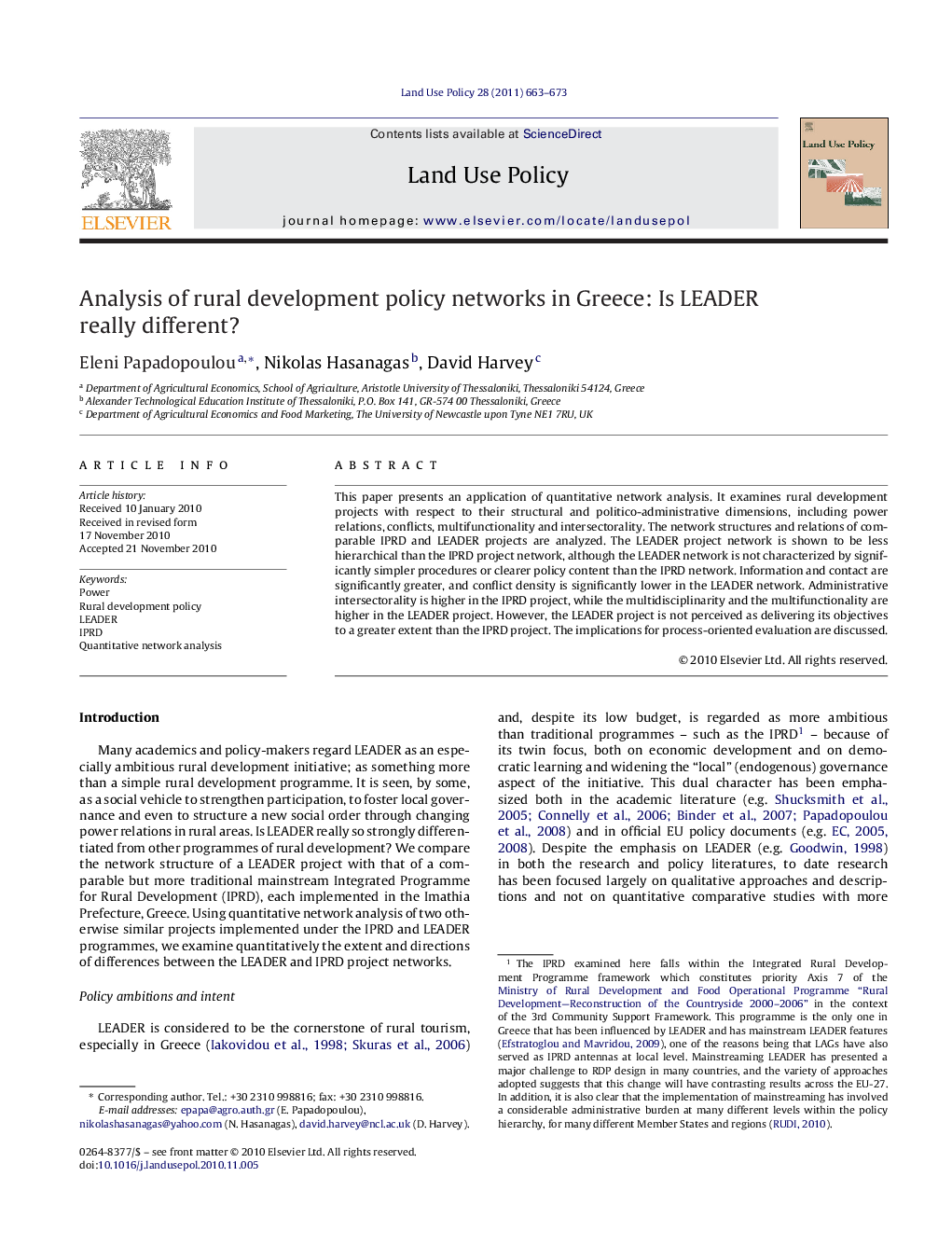| Article ID | Journal | Published Year | Pages | File Type |
|---|---|---|---|---|
| 93348 | Land Use Policy | 2011 | 11 Pages |
This paper presents an application of quantitative network analysis. It examines rural development projects with respect to their structural and politico-administrative dimensions, including power relations, conflicts, multifunctionality and intersectorality. The network structures and relations of comparable IPRD and LEADER projects are analyzed. The LEADER project network is shown to be less hierarchical than the IPRD project network, although the LEADER network is not characterized by significantly simpler procedures or clearer policy content than the IPRD network. Information and contact are significantly greater, and conflict density is significantly lower in the LEADER network. Administrative intersectorality is higher in the IPRD project, while the multidisciplinarity and the multifunctionality are higher in the LEADER project. However, the LEADER project is not perceived as delivering its objectives to a greater extent than the IPRD project. The implications for process-oriented evaluation are discussed.
Graphical abstract.Figure optionsDownload full-size imageDownload as PowerPoint slideResearch highlights▶ Power in policy networks can be measured as trust, incentives and pressure through uniqueness among actors. ▶ LEADER network is less hierarchical and more pluralist than an IPRD network. ▶ LEADER does not seem to deliver its objectives any better than a common IPRD project. ▶ Evaluation of processes seems to be necessary, in addition to evaluation of outcomes.
